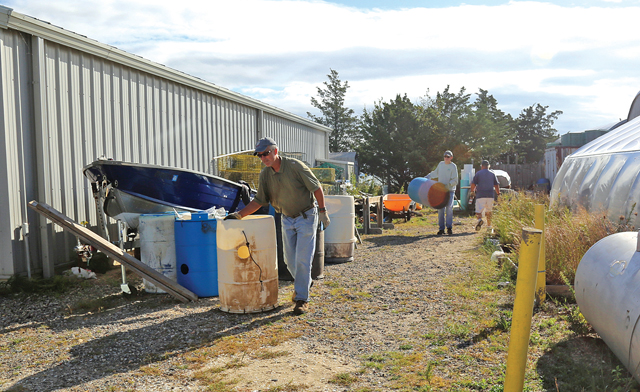Cornell Cooperative Extension looks to increase shellfish population

Starting this month, Cornell Cooperative Extension is slated to receive $5.25 million over the next two years from the state toward efforts to restore shellfish populations and give its Southold location a face lift.
The state is establishing five new sanctuary sites on Long Island in places where water quality is poor, but not so poor that it will not support shellfish, according to CCE marine program director Chris Pickerell.
“The hope is that by introducing enough shellfish in high enough concentrations we can jump-start the natural repopulation process while having a meaningful impact on water quality that should help to limit harmful algae blooms,” Mr. Pickerell said in an email. “As we all know, oysters and clams are great filters.”
CCE will provide all of the seed clams and oysters to be used for efforts across Long Island. The shellfish will be produced at its Cedar Beach hatchery in Southold and grown at sanctuary sites in Shinnecock Bay, Huntington Harbor, Bellport Bay and Hempstead and South Oyster Bays.
Over the course of two years, approximately 115 million seed clams and 25 million oysters will be produced, according to Mr. Pickerell. The first batch of oysters is expected to be planted next summer, while the first clams will follow in November 2018.
What make the project unique is that CCE will need to use a large number of floating upweller system nurseries — known as FLUPSYs — to generate the numbers and size of clams needed for the effort, Mr. Pickerell said. They expect to have as many as 41 FLUPSYs during 2018 and up to 70 in 2019. Each one can hold about 1 million clams, he said.
“The plan is to get the young clams in these systems as early as possible and at a fairly large size so that we will be able to produce larger clams,” Mr. Pickerell said.
In September, Gov. Andrew Cuomo announced a total of $10.4 million for initiatives aimed at improving Long Island’s water quality and bolstering the economies of coastal communities by restoring shellfish populations.
“Protecting our natural assets is critically important for Long Island, and by restoring our shellfish populations and investing in the preservation of New York’s coastal communities, we will strengthen the regional economy, create new jobs, and ensure our waters are clean,” the governor said in a press release. “We have one simple obligation — to leave this place better than we found it, and as we face the ongoing challenge of climate change, New York will continue to invest now to preserve the quality, resiliency and natural beauty of Long Island for generations to come.”
The state funds will also go toward capital improvements for CCE’s operations at Cedar Beach.
“Our growth at this site has been very piecemeal over the last 26 years and it looks like it,” Mr. Pickerell said. CCE will enhance its fish hatchery and redesign the site’s layout to be more efficient while improving its appearance, including installing new fencing to better define access and keep people off docks and bulkheads after business hours, he said.
In addition, Mr. Pickerell said, CCE will hire about 13 new employees, develop STEM-based youth education programs and recruit and train volunteers to help in the effort.
Legislator Al Krupski (D-Cutchogue) and Suffolk County Executive Steve Bellone were “instrumental” in securing the funding after both visited the CCE hatchery during its kelp harvesting event in June. Soon after, Mr. Pickerell was contacted by the governor’s staff to start the planning process.
“All in all this is a very exciting project and I can’t wait to start,” Mr. Pickerell said.
Photo: Suffolk Project in Aquaculture Training volunteers work last month at Cornell Cooperative Extension Marine Program’s Cedar Beach site in Southold, which will be redesigned with the help of state funds. (Credit: Kelly Zegers)









